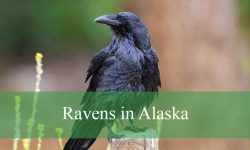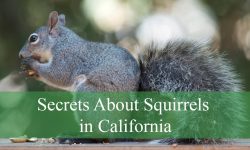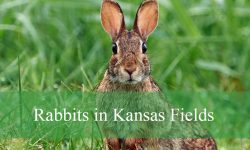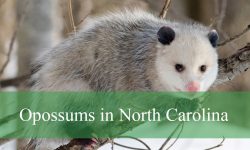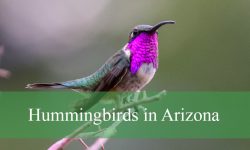Maine is known for its expansive forests, rolling hills, and abundant wildlife. Among its most iconic and impressive inhabitants is the moose, the largest member of the deer family and a symbol of northern wilderness. The moose population in Maine is the largest in the lower 48 states, drawing wildlife enthusiasts, photographers, and nature lovers from all over. These magnificent creatures embody the raw beauty of the region’s forests, and their presence plays a vital role in the ecosystem.
This article will explore everything about moose in Maine, from their physical characteristics and behaviors to their habitat, diet, and the challenges they face. You will discover surprising facts and insights that highlight the unique place moose hold in Maine’s natural world.
Introduction to Moose in Maine
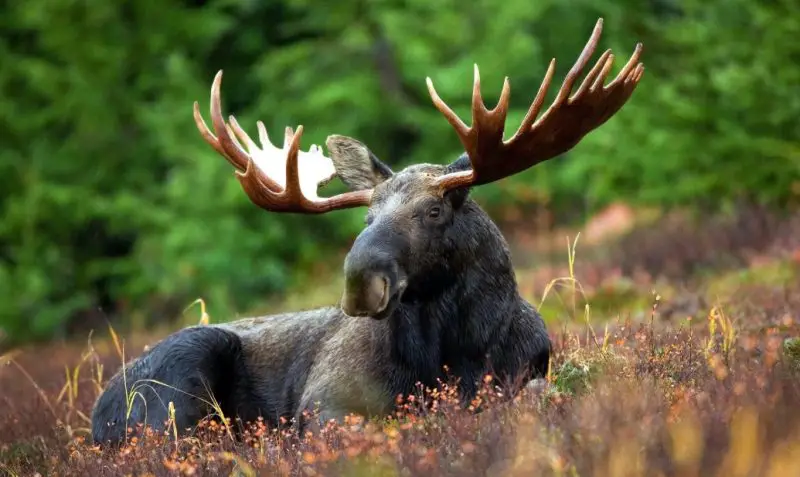
Moose (Alces alces) are large herbivores that thrive in cold climates and are well adapted to the boreal forests and wetlands of northern regions. Maine’s vast wilderness areas provide ideal habitat for moose, and it is estimated that the state hosts about 60,000 moose, making it the highest population density of moose in the continental United States.
The presence of moose in Maine is deeply intertwined with the state’s ecology. Moose influence forest composition by browsing on young trees and shrubs, and they serve as prey for predators such as black bears and coyotes. Their footprints and browsing habits leave noticeable impacts on the landscape, shaping plant growth and providing opportunities for other wildlife.
Physical Characteristics of Maine Moose
Maine moose are among the largest land mammals in North America. Adult males, known as bulls, are massive animals that can weigh anywhere from 1,200 to 1,600 pounds, and they typically stand about six feet tall at the shoulder. Female moose, called cows, are smaller, generally weighing between 800 and 1,200 pounds, and stand slightly shorter. Despite their size, moose possess an elegant, almost graceful appearance, with long legs that enable them to navigate through deep snow and marshy terrain with surprising ease.
One of the most striking features of male moose is their large, palmate antlers, which can span up to six feet across. These antlers are shed and regrown annually. Antlers begin growing in early spring and reach full size by late summer, covered in a soft, furry skin known as velvet that supplies nutrients and blood to the growing bone. By autumn, the velvet is shed, revealing hardened antlers that males use to compete for mates during the rut. The size and complexity of antlers often indicate the health and maturity of the bull.
Moose have a thick coat of dark brown to almost black fur, which insulates them during the cold Maine winters. Their heads are elongated, with a distinctive bulbous nose and a dewlap, or “bell,” hanging from their throat. Their eyes are relatively small, as their keen sense of smell and hearing compensate for less-than-stellar vision.
Behavior and Social Structure
Moose are largely solitary animals. Unlike deer species that live in herds, moose prefer to live and forage alone except during mating season or when a cow is raising her calves. Their solitary behavior reduces competition for food, which is critical given their high nutritional needs.
During the fall rut, usually occurring from late September through October, bulls become more active and vocal. They engage in “bugling” calls that serve to attract females and warn rival bulls. These bugles are loud, guttural sounds that can carry for long distances across the quiet forests and wetlands. Bulls will also physically spar with each other using their antlers to establish dominance and breeding rights.
Moose are surprisingly good swimmers and often enter lakes, ponds, and rivers during the summer months to feed on aquatic vegetation and to cool off. They can swim several miles without tiring and are known to dive underwater to reach plants growing on the bottom. Their long legs allow them to wade through wetlands and marshy areas that many other animals avoid.
In winter, moose behavior changes as they conserve energy to survive harsh conditions. They tend to seek sheltered areas, such as dense coniferous forests, where snow cover is lighter and wind is blocked. They move more slowly and reduce activity to preserve fat reserves.
Moose Habitat and Range in Maine
Maine’s landscape is dominated by forests, wetlands, and mountainous regions that provide ideal moose habitat. Moose prefer mixed forests that contain a variety of deciduous and coniferous trees. These forests offer abundant browse, including willow, birch, and aspen, which make up a large part of their diet. Wetlands, bogs, and lakes are also critical components of moose habitat, providing aquatic plants and water sources essential to their survival.
The highest concentrations of moose in Maine are found in the northern and western regions, particularly in Aroostook County and the North Woods. These areas are less developed and offer vast stretches of wilderness with minimal human disturbance. Moose are also found scattered throughout central and western Maine, though their numbers decline as human development increases.
Seasonal movements are typical for Maine moose. In winter, they tend to migrate to lower elevations and coniferous forests where snow is shallower, and shelter is better. In spring and summer, they spread out into wetlands, regenerating forests, and riparian zones rich in fresh vegetation.
Diet and Feeding Habits
Moose are herbivores with a diet that varies seasonally based on available food sources. In the spring and summer, they feed primarily on leaves, shoots, and twigs of deciduous trees such as willow, birch, and aspen. Aquatic vegetation, including pondweed and water lilies, also plays a crucial role in their diet during warmer months. These plants provide high levels of nutrients and minerals necessary for growth and reproduction.
In fall and winter, when leafy browse is scarce, moose switch to woody vegetation. They consume bark, buds, and twigs from conifers and hardwoods. This tougher diet provides the sustenance needed to survive long, cold winters. Moose have a specialized digestive system with a four-chambered stomach that ferments tough plant material, allowing them to extract nutrients from fibrous vegetation.
Moose spend several hours each day feeding, as their large bodies require substantial caloric intake to maintain energy and warmth. They use their long legs and prehensile lips to reach higher branches and strip leaves and bark efficiently.
Reproduction and Life Cycle
The moose breeding season, or rut, takes place from late September to early October. During this time, bulls actively compete for females by vocalizing and physically fighting other males. The largest, most dominant bulls with the biggest antlers typically secure mating opportunities.
Once bred, female moose undergo a gestation period of about eight months. Calves are usually born in late May or early June, coinciding with the peak of spring vegetation growth. Most cows give birth to one calf, though twins occasionally occur. Newborn calves weigh between 25 and 35 pounds and are able to stand and walk within hours of birth.
Calves remain closely attached to their mothers for several months, nursing on milk and learning to forage for vegetation. The first year is critical for their survival, as they are vulnerable to predation and harsh environmental conditions. By the following fall, young moose begin to explore independently, although some remain near their mothers until the next breeding season.
Predators and Threats to Maine Moose
Adult moose in Maine have few natural predators due to their size and strength. However, calves are vulnerable to predators such as black bears and coyotes, which can significantly reduce calf survival rates. Wolves, historically a natural predator, are largely absent in Maine.
Disease and parasites pose serious challenges for moose populations. The winter tick (Dermacentor albipictus) has caused severe declines in some areas. These ticks attach to moose and feed on their blood, leading to hair loss, anemia, and weakened health. Heavily infested moose may succumb to exposure and starvation during harsh winters.
Brainworm, a parasitic worm transmitted by white-tailed deer, also threatens moose. Although deer carry brainworm without serious illness, the parasite is often fatal to moose when it migrates to their central nervous system.
Human activities impact moose as well. Vehicle collisions are a leading cause of mortality, especially in areas where roads intersect moose habitat. Expanding development fragments their environment and can increase stress and reduce suitable feeding grounds.
Moose and Human Interaction
Maine’s moose are a popular attraction for wildlife watchers and photographers, who often seek the early morning or twilight hours to catch a glimpse of these elusive animals. Wildlife tourism centered on moose viewing contributes significantly to the local economy.
Hunting is regulated by the Maine Department of Inland Fisheries and Wildlife to manage the moose population sustainably. Controlled hunting seasons are established with permit lotteries to ensure the population remains balanced and healthy.
Encounters between humans and moose require caution. Moose can be unpredictable and aggressive, especially during rut or when protecting calves. Approaching too closely or startling a moose can provoke defensive behavior, so maintaining a safe distance is essential.
Conservation and Management Efforts
Maine’s wildlife biologists monitor moose populations closely using aerial surveys, radio collar tracking, and health assessments. These efforts help track population trends, disease impacts, and habitat conditions.
Efforts to control winter tick infestations include research into tick biology and environmental management. Public education campaigns raise awareness about how to safely observe moose and report sick or injured animals.
Conserving and managing moose habitat is equally important. Protecting wetlands, forests, and corridors allows moose to access food, mates, and shelter. Sustainable forestry practices and land conservation easements help maintain the natural environment necessary for healthy moose populations.
Interesting and Surprising Moose Facts
Moose are capable of running at speeds up to 35 miles per hour despite their large size. Their long legs enable them to stride through deep snow and water that can reach up to six feet. They possess a unique nasal system that warms cold air before it enters their lungs, an adaptation vital for survival in freezing climates.
Male moose grow and shed their antlers annually, with some bulls growing antlers that span up to six feet wide. Moose are excellent swimmers and can hold their breath underwater for up to 30 seconds while feeding on aquatic plants. Despite their size, their eyesight is relatively poor, but their sense of smell and hearing are highly developed. During the rut, the bull’s haunting bugle calls can echo miles through the forest, a sound both eerie and fascinating to hear.
FAQs About Moose in Maine
What time of year is best for seeing moose in Maine?
The best times to see moose are from late spring through early fall, especially during dawn and dusk when they are most active.
How large do Maine moose get?
Adult male moose can weigh up to 1,600 pounds and stand about six feet tall at the shoulder, while females are slightly smaller.
Are moose dangerous to humans?
Moose are generally shy but can become aggressive if provoked or during mating season. It is important to keep a safe distance and never approach them.
Why are some moose populations declining?
Declines are often linked to disease such as winter tick infestations and brainworm, habitat loss, and vehicle collisions.
Is it legal to hunt moose in Maine?
Yes, but moose hunting is strictly regulated through a permit lottery system managed by the Maine Department of Inland Fisheries and Wildlife.
Conclusion
The moose of Maine are majestic creatures that embody the wild spirit of the northern forests. Their impressive size, unique behaviors, and adaptability to harsh environments make them fascinating subjects of study and admiration. Understanding their biology, habitat needs, and the threats they face is crucial for ensuring their continued presence in Maine’s landscapes.
By appreciating and protecting moose, we preserve an essential part of the natural heritage that defines the state. Whether you are a resident or visitor, spotting a moose in Maine’s wild woods is a memorable experience that connects you to nature’s grandeur.

